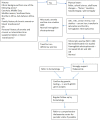Optimal strategies for carrier screening and prenatal diagnosis of α- and β-thalassemia
- PMID: 34889395
- PMCID: PMC8791174
- DOI: 10.1182/hematology.2021000296
Optimal strategies for carrier screening and prenatal diagnosis of α- and β-thalassemia
Abstract
The thalassemias are inherited quantitative disorders of hemoglobin synthesis with a significant worldwide burden, which result in a wide spectrum of disease from the most severe transfusion-dependent form to the mildest asymptomatic carrier state. In this article, we discuss the importance of carrier, prenatal, and newborn screening for thalassemia. We examine the rationale for who should be screened and when, as well as the current methodology for screening. Deficiencies in the newborn screening program are highlighted as well. With the advent of inexpensive and rapid genetic testing, this may be the most practical method of screening in the future, and we review the implications of population-based implementation of this strategy. Finally, a case-based overview of the approach for individuals with the trait as well as prospective parents who have a potential fetal risk of the disease is outlined.
Copyright © 2021 by The American Society of Hematology.
Conflict of interest statement
Cheryl Mensah has served as a consultant to Bluebird bio and Chiesi. She currently serves on adjudication committee for CRISPR/Vertex for thalassemia.
Sujit Sheth is a consultant to Agios, Bluebird bio, Bristol Myers Squibb, and Chiesi and serves on a clinical trial steering committee for CRISPR/Vertex CTX001 for thalassemia.
Figures





References
-
- Sheth S, Thein S. Thalassemia: a disorder of globin synthesis. In: Kaushansky K, Prchal JT, Burns LJ, Lichtman MA, Levi M, Linch DC, eds. Williams Hematology. 10th ed. McGraw-Hill; 2021.
Publication types
MeSH terms
LinkOut - more resources
Full Text Sources
Medical

